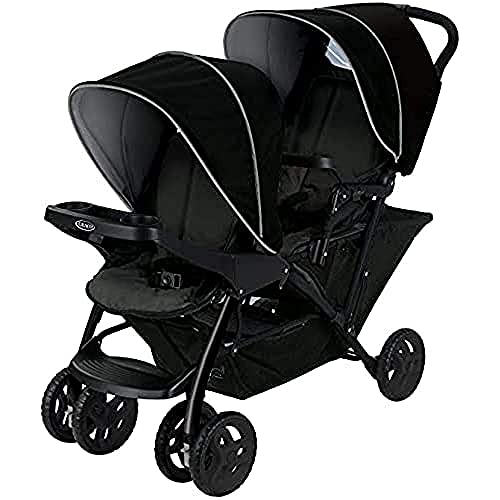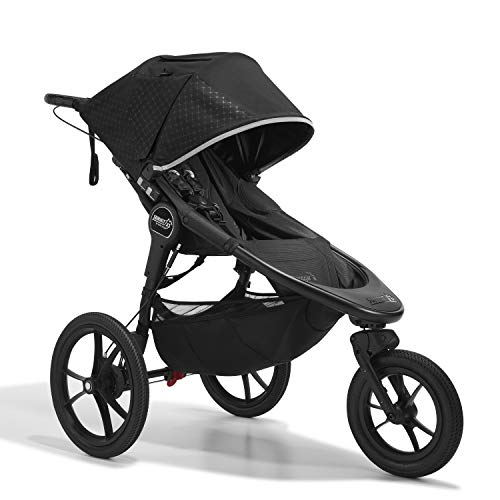Parent Facing Pram Tools To Improve Your Daily Lifethe One Parent Faci…
Daniele
0
3
01:15
 Monitor Your Little One's Wellbeing With a Parent Facing Pram
Monitor Your Little One's Wellbeing With a Parent Facing PramYou can easily check your child's well-being and comfort while they're in a pram that is positioned with the parent. This is especially useful on busy days.
University of Dundee study found that babies in face-toface buggies had more fun and had twice as much chat time and had a lower heart rate which are all signs of less stress.
Peace of Mind
A parent facing pram is a great method to ensure your baby's safety is secured. The seat will be secured with a five-point harness, which will ensure your baby's safety from accidents.
A quality pram will also have an ample shopping basket that can take care of all the baby's needs, ensuring that you don't have to worry about where to place all of the other things. The right accessories are crucial to help your baby stay comfortable throughout their travels for example, a footmuff (check that they're compatible with a 5-point harness) and a pram liner to protect against sun or rain.
When choosing a pushchair for your child's new arrival it is essential to test drive it and choose the appropriate model for you and your child. Models with swivel-wheels for easy maneuverability, and adjustable handlebars will make it easier for all family members to operate.
A safety harness is vital for parents worried about their baby falling out of the buggy. It will stop your baby from getting out of the seat. It's also great for keeping them safe in case of any emergency situations.
It's important to remember that some baby experts recommend that babies be at least six months old before they can use a front-facing pram but this is due to individual developmental milestones. But, some babies will be able to take on the world earlier, specifically when they're interested and eager to discover the world around them.
Parents might be worried that their baby will develop a flat spot in the back of their head while sitting in a parent facing pram, but this is nothing to worry about. Auckland osteopath Julia Griffiths suggests that babies need to spend a lot of time lying flat in order to strengthen their skull muscles, and this is usually accomplished using a car in a position that is affixed to the parent and being supervised during Tummy time.
Bonding Enhanced
If you've picked a pram with a carrycot, or are opting for a pushchair, the direction that your baby's face is when out and about is something to consider. It might appear to be a minor issue however it can have a significant impact on your baby's development and their interaction with you while out and about.
A new study has revealed that babies who have buggies facing away from their parents are less likely to talk, interact or laugh with them than babies who use a compact pushchair with the parent. The study involved 2,722 kids with their mothers from 60 cities as well as another study that focused on 20 mothers and their children. The study found that babies who were in a pram facing their parents were twice more likely to smile as those who were seated in a buggy facing away. The reason behind this is that when your baby is able to see you, they are more engaged and eager to share the experience with you, promoting interaction and bonding.
Face-to face interaction between babies fosters attachment and growth. You can also point out things to them, such as flowers or playgrounds, as well as other things they might not otherwise see.
It is important to keep in mind that your baby should be able to sit up independently before you convert it into a pushchair that faces toward the front. Baby's younger than this might struggle to cope with the change and might be more distressed when they must move from an inward to an outward position.
A health professional can test your baby to ensure they are prepared for the transition. They can check whether your child's bones and muscles are strong enough to withstand the change, and also if they have developed any oversensitive areas. This test is especially crucial if you've used the pushchair since your baby's birth, or if you've previously had an away-facing pram store near me. A health professional will be able to give you advice on the appropriate time for your child to transition to an forward-facing pushchair.
Better Eye Contact
One of the best prams things about having a parent facing pram is being able to keep eye contact with your child. This is particularly important for newborns and infants, as they are still learning about the world around them. It's also a chance to talk to them and play with them, which helps them learn the names of things they see and boosts their development in language.
Studies have proven that when a baby is placed in front of their parents they're more likely to speak to them and laugh more than if they're looking away from them. This is because they're taking in the sounds and images of their environment, which helps them understand what's going on around them. Eye contact also makes it easier for parents and their children to communicate. This helps to comfort the baby and allows him to relax.
It's also an excellent idea to bring along a travel toy for your child when they're in their pushchair. These toys are excellent for stimulating the brain and making children smile. They can also aid your baby to recognize your voice, which is crucial to their development as a cognitive child.
Babies are always exploring the world and their surroundings. As they age and become more active, they might be able to sit in their pushchair. If this is the case it's worth looking into a front-facing stroller or pram from our collection.
It is recommended to purchase a footmuff after converting to a pushchair with a forward-facing. This will keep your child warm. Choose a design which can be removed and put back when needed and is compatible with the car seat or cot for your baby. You can also purchase an exclusive travel toy that helps your baby recognize their pram with car seat when out and about.
A great way to ensure that your baby's position for pushing is correct and comfortable is to check their head and neck alignment on a regular basis. If the front of their pushchair tilts inwards, then their neck and head will be pushed against it which isn't safe.
Easier Monitoring
The comforting sight of your child's face in a parent facing pram allows you to observe them better. You can determine if your baby is asleep, upset, or cold. You can also tell whether their hat or socks are missing. You can also talk to a baby more easily when they are standing in your presence. They can see you and hear your voice.
This is essential for babies who have difficulties with language and speech because it helps them to be more active. It's also a great method to help them understand the world around them, such as when you draw out buses or flowers. It's also a great occasion to sing to them as well especially if they are fond of singing!
Many babies love talking to their parents when they're parent facing and there are plenty of studies that prove this. For example this study from Dundee University found that babies chatted twice as much when in a pushchair that was facing forward than in a rear-facing one. The same study also revealed that babies whose faces weren't visible to their parents' heartbeats fluctuated more frequently, suggesting that they were stressed and anxious. Babies who had their faces visible to them on the other hand were able to have heart rates that were more steady and relaxed.
 However this doesn't mean all children need to be changed from a rear-facing baby stroller to a front-facing one straight from the start. It is recommended to wait until your child is six months old. This is the age when their bones and muscles are fully developed enough to ensure that the transition is safe for them.
However this doesn't mean all children need to be changed from a rear-facing baby stroller to a front-facing one straight from the start. It is recommended to wait until your child is six months old. This is the age when their bones and muscles are fully developed enough to ensure that the transition is safe for them.This is why many parents opt to keep their babies in a stroller with a parent-facing seat until they reach. There are a variety of top strollers and pushchairs that let you switch between the two positions so you can keep your child parent-facing for as long as you'd like. Check the compatibility between your buggy or pram as well as the car seat that you are planning to use. This will vary from model to model.
